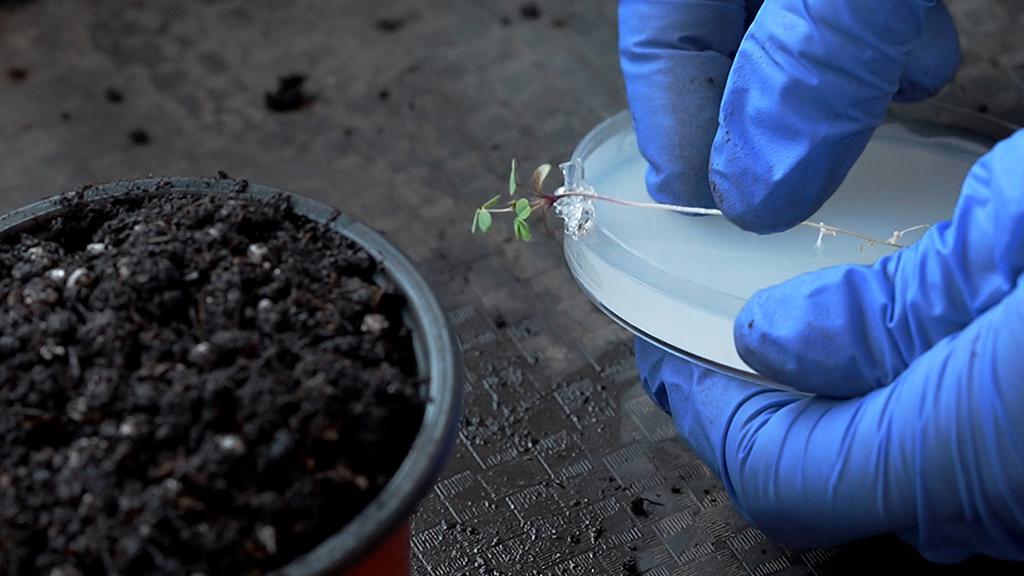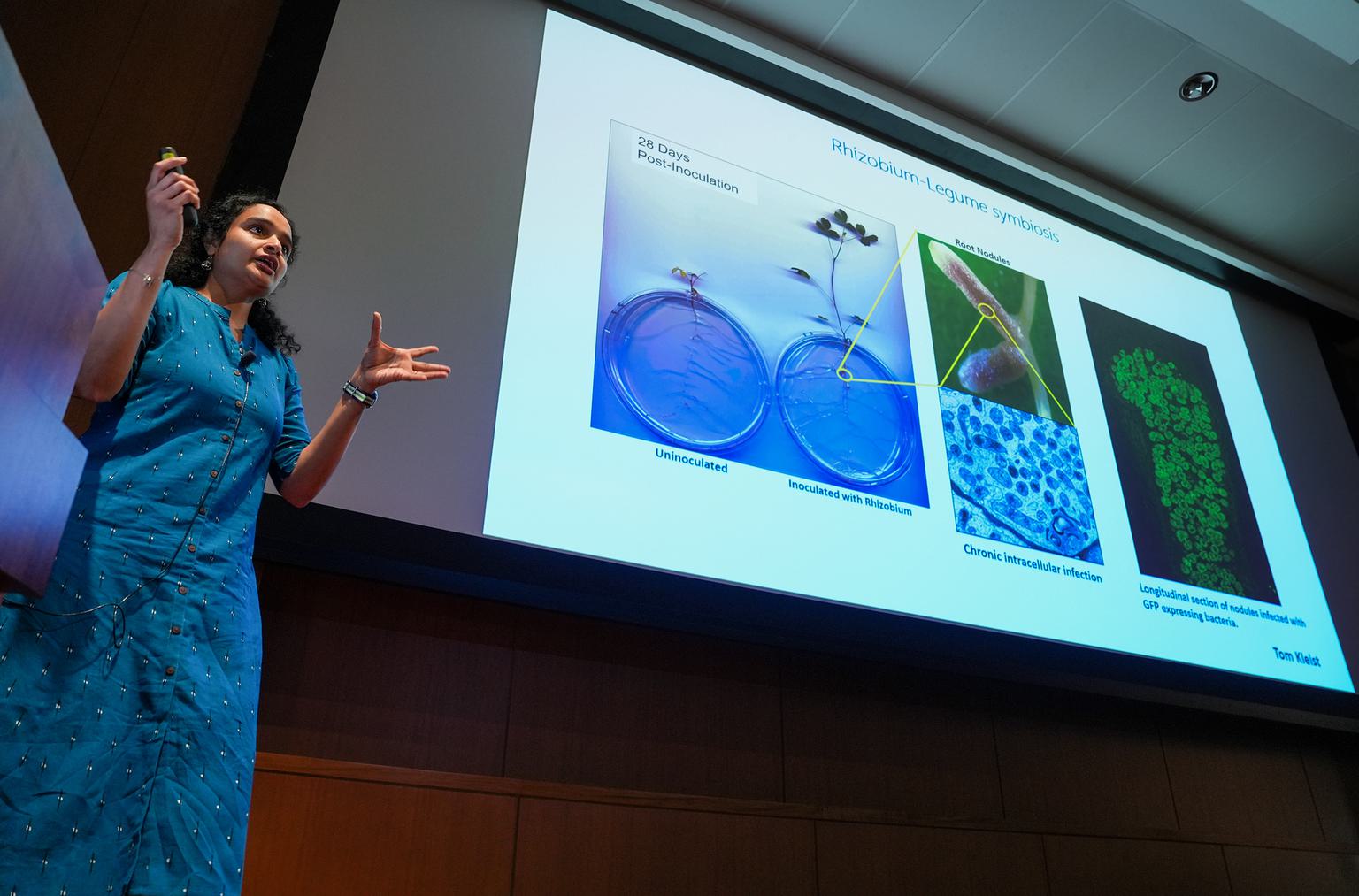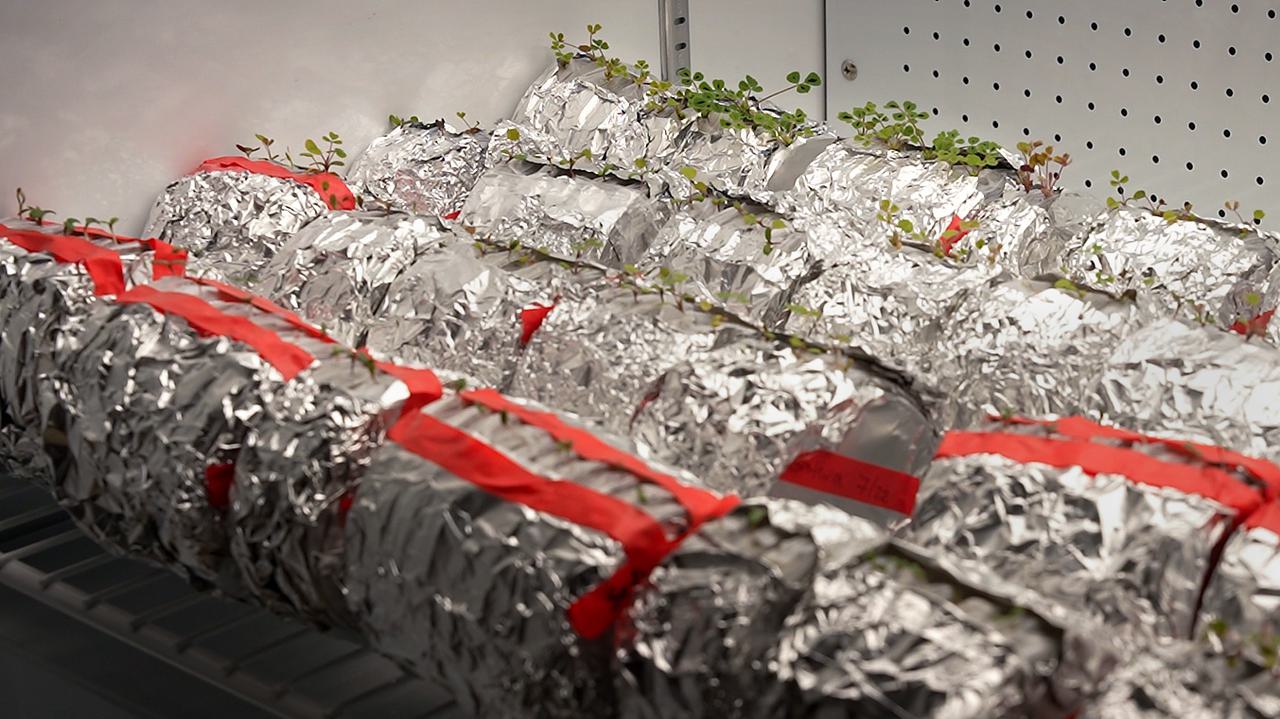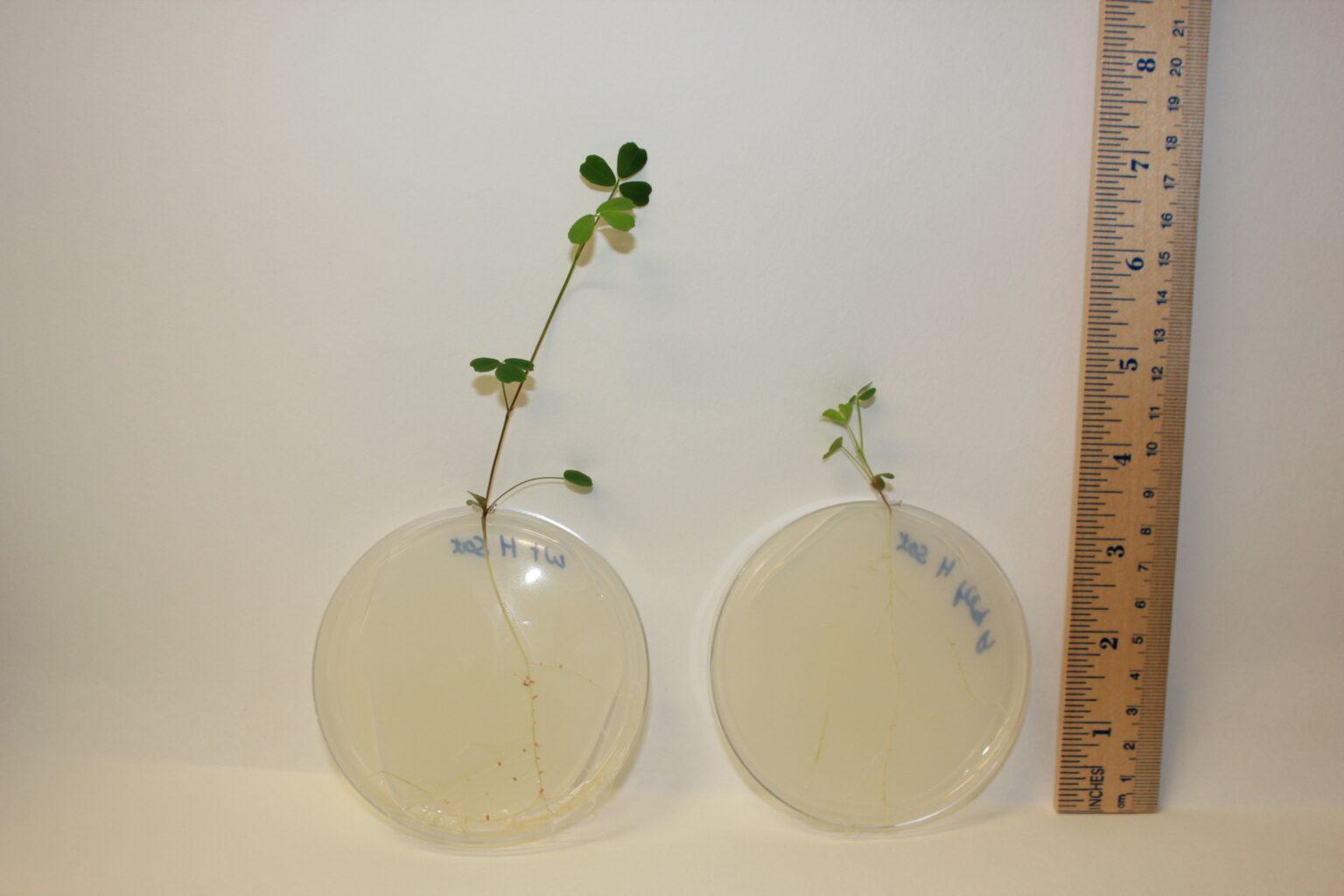Research
Research

Overarching questions we aim to answer

What are the mechanisms of action of host peptides?

What are the underlying mechanisms that drive terminal differentiation and polyploidy in bacteria?
Our research

The existence of a molecular arms race between eukaryotic hosts and pathogenic bacteria has been known for many decades. However, our knowledge on the molecular basis of how mutually beneficial symbiotic relationships happen is limited. Like in all relationships, during symbiosis, the benefits may not be equal for both species. Especially in some cases, the hosts develop strategies to take total control of the life cycle of beneficial bacteria and enslave them for their own benefit.
One such exploitative relationship happens between the legume Medicago sativa and the nitrogen-fixing soil bacterium Sinorhizobium meliloti. In this symbiosis, the free-living monoploid bacteria infect the plant, but then the plant enslaves the bacteria by turning it into a polyploid, terminally differentiated endosymbiont. Terminally differentiated bacteroids lose their ability to survive outside the host and behave like organelles within the host cell. The plant achieves this extreme control over the life cycle of bacteria by targeting the bacteria with an arsenal of about 700 small peptides known as Nodule-specific Cysteine Rich (NCR) peptides.
The mechanism of how this arsenal of host peptides tame the intracellular bacteria remains unknown. Based on our current and previous work, we know these peptides have evolved to fine-tune the cellular metabolism of bacteria and transform them into workhorses for the plant.
Clinical importance
NCR peptides vary in their physio-chemical properties and can act at various stages of differentiation of bacteria. Hence, they are expected to modulate bacterial metabolism by altering different biochemical pathways. NCR peptides could potentially be developed into therapeutics based on their function. For example, we have previously demonstrated that one of the NCR peptides, named NCR247, can act as a high affinity, small molecule heme chelator and is currently being pursued for various clinical applications beyond the symbiotic arena of NCR peptides (US Patent #12,065,468). Almost all eukaryotic organisms produce peptides in response to both pathogenic and symbiotic bacteria. Our research aims to broaden our understanding of the dynamics between the host and their bacterial partners that are driven by host peptides.

Agricultural importance
There is a growing need for protein-rich food to feed the growing world population. At the same time, careful consideration to protect our environment during agricultural practices and prevent pollution is also extremely important. During symbiosis between rhizobial bacteria and leguminous plants, bacteria convert atmospheric nitrogen to plant-usable form in a process called Biological Nitrogen Fixation. This is an effective alternative to mitigate the harmful effects of using chemical nitrogen fertilizers. In systems where legumes produce NCR peptides, an increasing efficiency in nitrogen fixation has been observed. More detailed studies are required to understand how this is achieved by the plant and to use these peptides as tools for increasing Biological Nitrogen Fixation.
